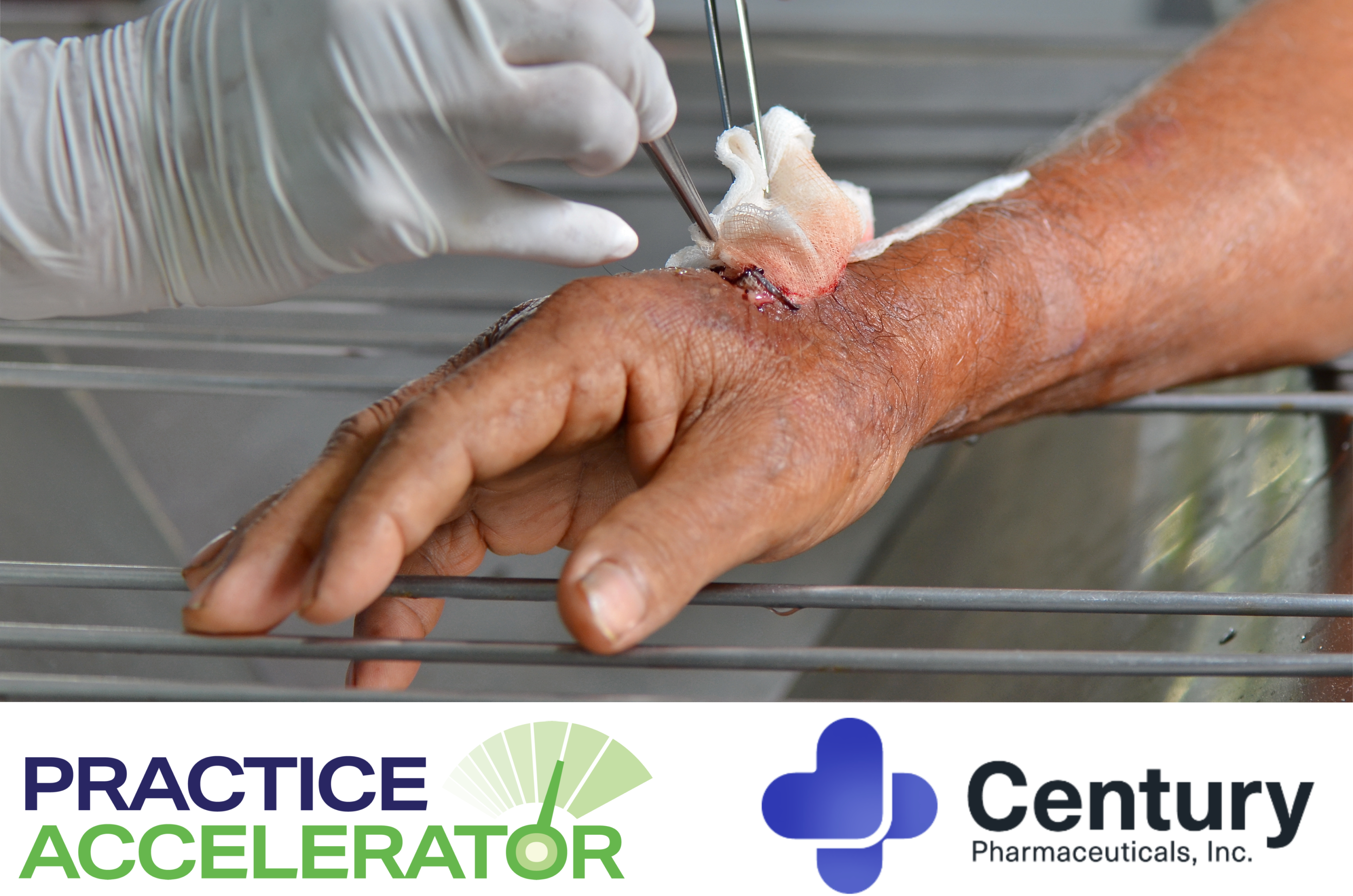Debridement of Burns—Navigating a Challenging Population
February 27, 2024
Debridement of Burns–Navigating a Challenging Population from HMP on Vimeo.
Hello, my name is Dr. Maria Goddard and I'm a burn surgery fellowship physician who practices wound care in the Midwest.
What unique challenges does the burn patient population have when it comes to wound healing and debridement?
The challenge with burn wounds is that there is a different type of pathophysiology compared to our other traditional wound types. Patients who have sustained burn injuries most often have been exposed to heat and this will cause a coagulation necrosis, unless it is a burn that has been caused by an alkali chemical where you will see that more liquefactive necrosis.
Because of this, you're going to have denatured proteins which as a result is going to cause increased vessel permeability, you're going to have edema and you're also going to have overall increased inflammatory and metabolic states. Because of this, our burn wounds are typically happening in patients who are healthy, where the wound is not an indication of some other underlying comorbidity, but it's the injury itself that is leading to why that patient is presenting to you with that wound. Because of this, we have to remember that classifying that burn wound at the time of injury and also following it after is going to be really essential to determine your treatment plan.
How Much Do You Know About Debridement? Take our quiz to find out! Click here.
Back in the 1940s Jackson described his zones of injury for burns and this is something that you need to think about and there are 3 concentric areas. The central zone is the zone of coagulation. That is where those tissues have been irreversibly damaged and it is highly likely that there will need to be some sort of intervention to remove that non -viable tissue. At the outermost edge, you have the zone of hyperemia, where those vessels are normally well -perfused and those tissues will likely go on to heal on their own. The middle zone is your zone of concern or the zone of stasis. If you're able to intervene quickly, by cooling the area, by increasing nutrition, by restoring fluids to the area, you can save that area from going into the zone of coagulation and have those tissues heal on their own. Because of this, we need to make sure that we are not debriding patients with burn wounds too quickly.
It is highly unlikely that within that first 48 hours that it's going to be a clear demarcation of what tissues are completely non -viable. And because of this, you will need to make sure that you are protecting that area from any potential infection, as that outer most layer of skin is now damaged, and bringing those patients back in if it's an injury that you think you can handle on an outpatient basis.
Those patients with larger burns because of that pathophysiology or with injuries that have been sustained in areas that are very sensitive, such as their extremities, if their face or if they're pediatric or geriatric patients, those patients should be transferred to a specialized burn center because of that difference in pathophysiology. For those that you choose to keep on an outpatient basis, you'll need to evaluate them within 48 hours and probably again after, before you move on to debriding that wound.
How does burn debridement differ from that of typical wound debridement?
Because your burn wounds are going to have that coagulation necrosis, it is going to be a thicker eschar and differ in appearance to your traditional wounds. We often think of eschar as being dark brown or pale or black, but because of the denatured proteins, the area with a burn eschar is going to have a more thick and pale appearance and that is in patients of all skin types and skin tones.
So, you want to make sure that in addition to just looking at the area, you're also assessing the texture of the skin it will have that more waxy appearance. Because of this you need to make sure that you have really sharp tools available to remove that layer. It may take several passes with your sharp implement if you're doing sharp debridement before you reach an area with viable tissue. This may also be a good time to use a combination of enzymatic debridement where it won't harm your healthy tissues and you can bring them back in to see if further debridement needs to be performed before you reach an area that is fully viable.
What one debridement fact or concept do you feel wound care professionals can learn about or do right now to improve their outcomes for patients with burns?
Pain management is essential for all of our wound patients, but especially for those who have sustained burn injuries. You have to remember that this is a wound that is occurring in the midst of otherwise healthy tissue, and once you expose those nerve endings through either dressing changes, through debridement, that those patients are going to have severe pain. And you want to make sure that before you begin any intervention that you have a plan in place for how you're going to do that.
If you're going to be managing patients on an outpatient basis, you want to time them having some sort of pain medicine before you begin your debridement or your dressing change, or you want to make sure that you have some topical agents available.
When speaking with burn survivors or patients who have sustained burn injuries, they often say that in addition to the trauma of how they sustained the injury itself, the trauma of going through the treatments can be just as terrible. And so we want to make sure that we're taking that into consideration as we go through treating our patients.
The views and opinions expressed in this blog are solely those of the author, and do not represent the views of WoundSource, HMP Global, its affiliates, or subsidiary companies.












Follow WoundSource
Tweets by WoundSource